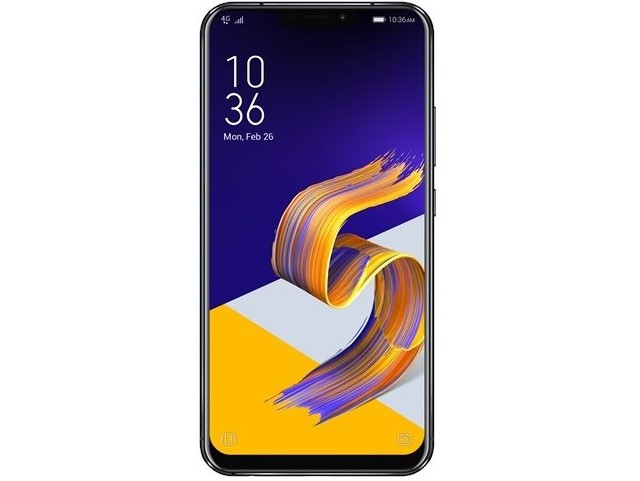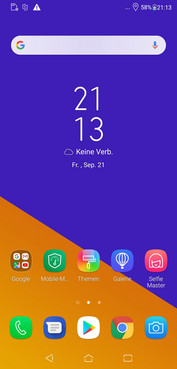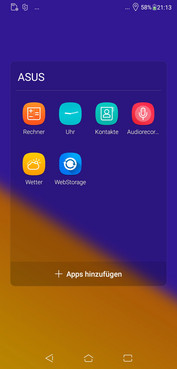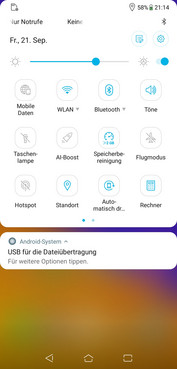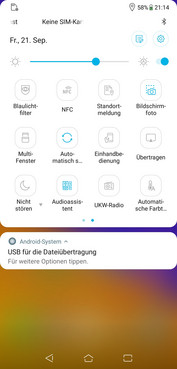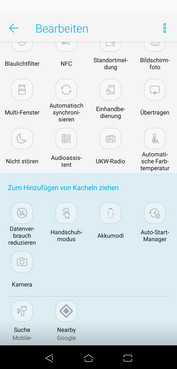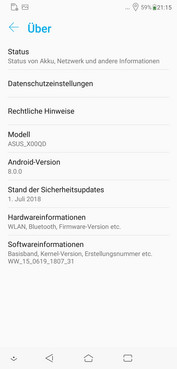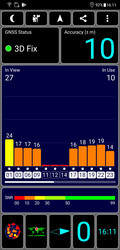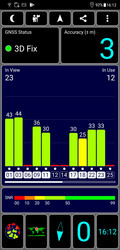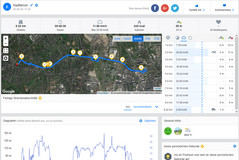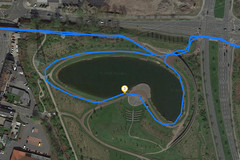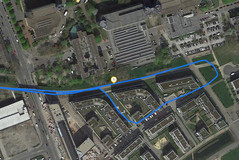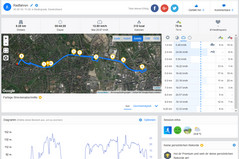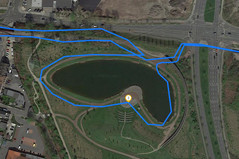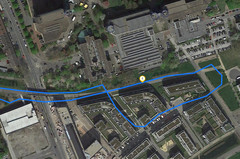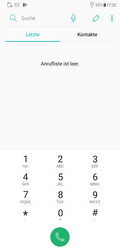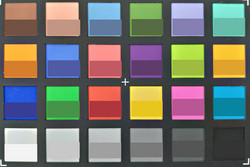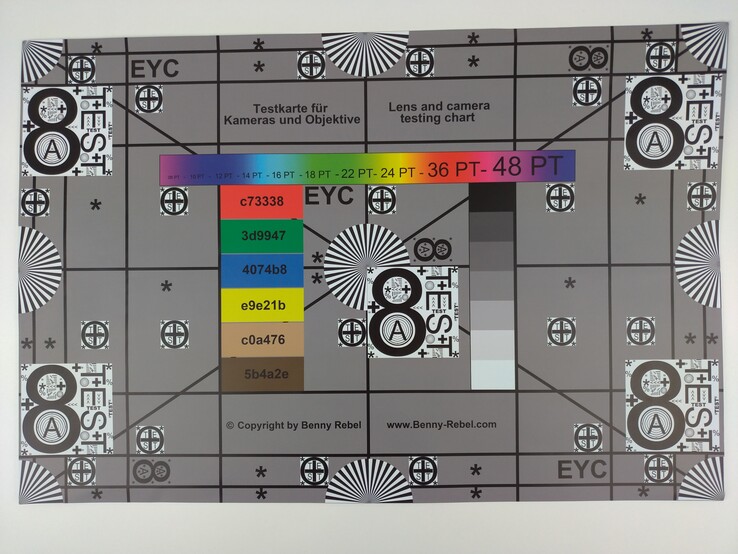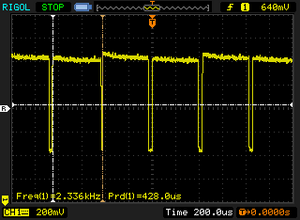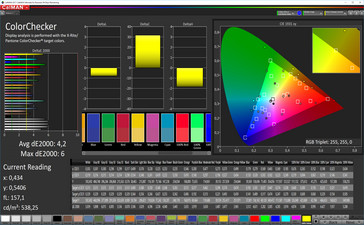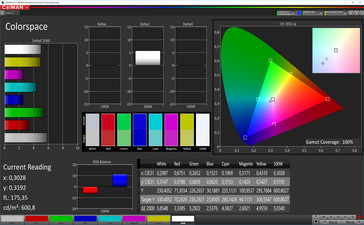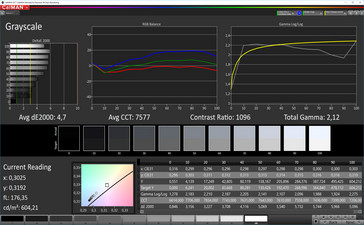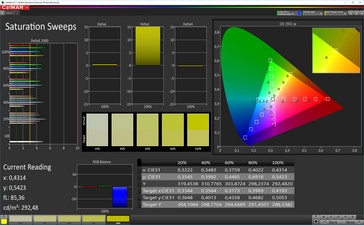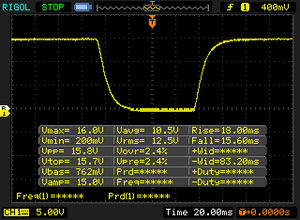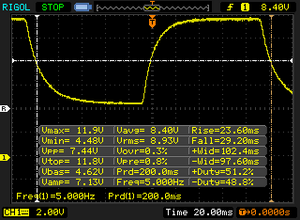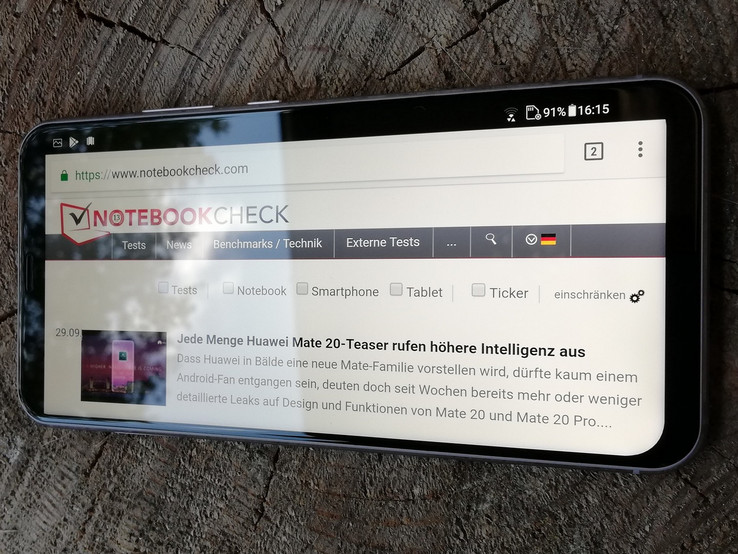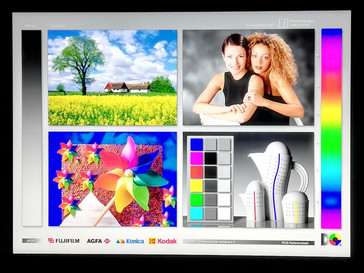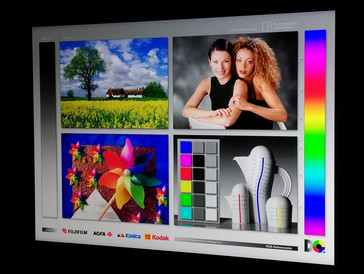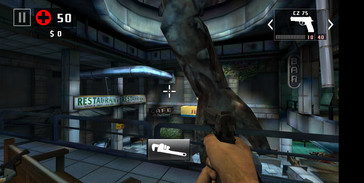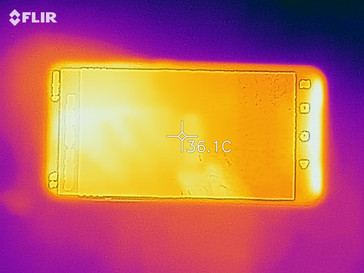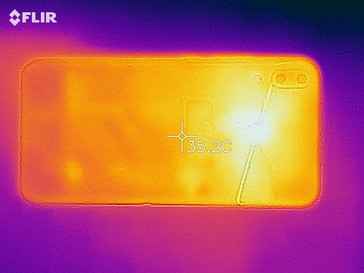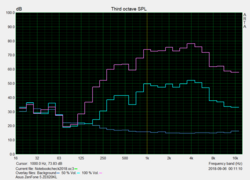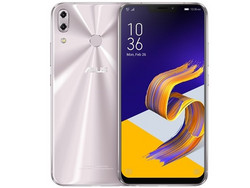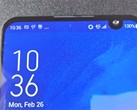Asus ZenFone 5 (2018) ZE620KL Smartphone Review

When it comes to their ZenFone line, Asus has always tried to entice prospective buyers with grandiose promises. In the case of the ZenFone 4, it was the dual camera with a wide-angle lens. For the ZenFone 4 Max, it was long battery life. Our current test device does not have much in common with the 2014 ZenFone 5—instead it harks back to the fourth generation, where the camera was in the foreground. Additionally, numerous AI functions are intended to support users as they operate the smartphone. For example, the display's color temperature adapts to the ambient lighting, and background noises influence the volume of the ringtone.
Qualcomm's Snapdragon 636 SoC, supported by an Adreno 509 graphics unit, provides a solid basis for good system performance. The two processors are joined by 4 GB of RAM and 64 GB of eMMC flash memory for the installation of apps and storage of personal files. But in this price-performance class, the ZenFone 5 has to be able to stand tall in the face of the competition. In this review, we will weigh the Asus phone against several comparable devices, including the Nokia 7 Plus, LG's Q7 Plus, the Honor 10, Xiaomi's Mi Mix 2 and the BQ Aquaris X2 Pro.
Case - Asus smartphone with Gorilla Glass
When you first look at the ZenFone 5, the thing that stands out is how much space is occupied by the display. According to Asus, the display takes up 90% of the face of the smartphone—and it really does feel like no space is lost. Even so, the frame around the display and the rounded bezel seem fairly wide—certainly a few millimeters too thick for the word "bezel-less" to apply.
While both the front and back of the Asus smartphone are dominated by glass, the frame and keys are made of metal. This gives the phone a high-end feel, reinforced by the good manufacturing quality. There are as good as zero gaps in transitions between materials. Asus has overlaid the glass surface with Corning Gorilla Glass for extra stability.
Connectivity - ZenFone 5 with Bluetooth 5.0
The ZenFone 5 2018 is equipped with a Qualcomm Snapdragon 636, an Adreno 509 graphics unit, 4 GB of RAM and 64 GB of eMMC flash storage. The internal storage can be expanded by up to 2 TB with a microSD card, but the microSD card blocks the second nanoSIM slot. Alongside a fingerprint reader, users have access to an NFC sensor on the back of the device.
A USB Type C port connects the phone to its power supply and enables cable-based data transfer. The port only offers USB 2.0, but it does support USB OTG, meaning that the phone can act as a USB host and charge external devices. A 3.5mm jack serves to physically connect the ZenFone to external speakers or a headset.
Software - Android smartphone with ZenUI
The ZenFone 5 comes with Android Oreo version 8.0, inclusive of security updates dated from July 1st, 2018. The manufacturer has chosen to equip the phone with their proprietary user interface, the Asus ZenUI 5. This UI has customized visuals and many apps that replace standard Google programs. The phone is still intuitive to operate, even for beginners.
The settings menu has also been redesigned, but offers all the functions users are familiar with on other Android smartphones. In addition, the menu allows for multiple user accounts. A microSD card only enlarges the storage space available for the user's own data; apps cannot be installed on it, and pre-installed programs can only be deactivated (not uninstalled).
Communication and GPS - Fast WLAN on the ZenFone 2018
ZenFone 5 users can establish connections over GSM, 3G and LTE networks. The latter supports LTE Cat. 12, which enables download rates of up to 600 MBit/s and upload speeds of up to 150 MBit/s.
For communication over shorter distances, Bluetooth 5.0 and WLAN in the standards a, b, g, n and ac stand at the ready. Connections can be established on both 2.4 and 5 GHz bands. In our WLAN test, the Asus smartphone reached download speeds of up to 339 MBit/s and upload speeds of up to 308 MBit/s. These results place the Asus phone in the upper mid-range among the devices on our comparison list. The substantially faster Xiaomi Mi Mix 2 is the clear winner here.
| Networking | |
| iperf3 transmit AX12 | |
| Xiaomi Mi Mix 2S | |
| BQ Aquaris X2 Pro | |
| Asus Zenfone 5 ZE620KL | |
| Nokia 7 Plus | |
| Honor 10 | |
| LG Q7 Plus | |
| iperf3 receive AX12 | |
| Xiaomi Mi Mix 2S | |
| Asus Zenfone 5 ZE620KL | |
| BQ Aquaris X2 Pro | |
| Nokia 7 Plus | |
| Honor 10 | |
| LG Q7 Plus | |
We used the GPS Test app to determine how accurately the ZenFone 5 (2018) ZE620KL can position itself. Outdoors, the smartphone ascertained its position with an accuracy of up to 3 meters (~10 feet). Establishing a satellite connection was possible indoors as well, although the accuracy reduced to 10 meters (~33 feet).
We compared the Asus ZenFone 5's GPS with that of our Garmin Edge 500 reference device on our mandatory bike ride. Our test showed that the ZenFone frequently positions the user a little away from his or her actual route, and along curves the path is not precisely recorded. The Android smartphone is suited for simple navigation tasks, but applications requiring more accuracy should be carried out with an external GPS.
Phone Function and Call Quality - Asus smartphone with clear sound
Using the ZenFone 5's telephone app, users have direct access to a number pad and can dial phone numbers from a call list. A second tab provides access to the contact list. During conversations, both participants voices come across clearly and are easy to understand. The volume is loud enough to ensure that the conversation partner is audible in normal environments. Background noise is filtered out reliably.
Cameras - Smartphone with dual camera for poor lighting
The ZenFone 5 has a rear 12+8 MP dual camera at its command, as well as a simple 8 MP selfie camera on the front. The latter takes good portrait shots, though the subject looks a little pale. On the positive side, details are captured faithfully, and objects in the background are easily recognizable too. The camera app offers lots of settings options to influence shots, ranging from adjusted skin tones to slimmer cheeks to smoothed blemishes. The camera's AI also remembers preferred settings and learns to adopt them automatically.
The Asus smartphone's main camera takes mediocre photos. Shots with stark differences in brightness or backlighting are especially problematic, as the photos turn out too dark. Finer details are only captured on brightly lit objects; dark surfaces, on the other hand, have poorly-defined edges and a "muddy" structure. In more balanced lighting situations, the camera is able to take more detailed shots. Fine structures are captured well, and lots of details are easily recognizable. Even so, the coloration is influenced by the image's dominant color. In the case of our test photo, for instance, the whole picture looks a little green. In low lighting, the ZenFone 5 2018's camera reproduced our sample image well. The lens does not capture details, but objects remain clearly visible. The settings options in the camera app enable users to employ various color filters and quality settings. There is, however, no professional mode with fine-tuned settings. Users can simply choose between the normal and the wide-angle lens. In addition, Google Lens is directly accessible through the camera app.
The video quality is comparable to that of photos, though there are no settings options for video recording. The good image stabilizer enables the smartphone to record jitter-free videos.
We used ColorChecker Passport to determine how well the ZenFone 5 ZE620KL reproduces colors. The results show that colors are rendered too light and black tones too dark.
In controlled lighting, the Asus smartphone reproduces our test chart very well. Details and fine structures are rendered in sharp relief and are easily recognizable. However, colors become noticeably pale in the lower corners, even in wide-angle format.
Accessories and Warranty - 24 months warranty on the Android smartphone
The ZenFone 5's box contains just a USB power supply with a matching USB Type C cable. Protective covers designed for the smartphone can be purchased separately from Asus, as can a variety of headsets.
Buyers of the ZenFone 5 (2018) ZE620KL will receive a 24-month warranty from Asus. Please see our Guarantees, Return policies and Warranties FAQ for country-specific information.
Input Devices and Operation - Lightning fast fingerprint reader
Asus has chosen Google's standard GBoard keyboard for the ZenFone 5. This keyboard enables users to type texts quickly and easily. Each touch is confirmed with a gentle vibration, and input is seamlessly translated into action. The touchscreen reacts very reliably and provides a faint level of friction between the screen and the user's fingertips. This makes drag-and-drop gestures somewhat difficult over a longer period. The position sensor also reacts quickly and adapts the display to the smartphone's screen orientation.
The fingerprint reader is located on the back of the Asus smartphone. It scans fingerprints and reacts almost instantaneously, unlocking the phone faster than would be possible with a pattern or PIN.
Display - 6-inch smartphone with notch
The Asus ZenFone 5's display consists of a 6.2-inch IPS panel in 18.7:9 format with a resolution of 2246x1080 pixels. With an average brightness of 561 cd/m², the Android smartphone positions itself second on our comparison list. On the other hand, the brightness distribution is only 87% similar across the screen and thus inferior to the competition. Asus has chosen to use PWM to regulate the display brightness. At brightness levels of less than 26%, the display flickers at 2366 Hz. Fortunately, this frequency is quite high and should spare even sensitive users from eye problems or headaches.
| |||||||||||||||||||||||||
Brightness Distribution: 87 %
Center on Battery: 595 cd/m²
Contrast: 1102:1 (Black: 0.54 cd/m²)
ΔE ColorChecker Calman: 4.2 | ∀{0.5-29.43 Ø4.78}
ΔE Greyscale Calman: 4.7 | ∀{0.09-98 Ø5}
100% sRGB (Calman 2D)
Gamma: 2.12
CCT: 7577 K
| Asus Zenfone 5 ZE620KL IPS, 2246x1080, 6.2" | LG Q7 Plus IPS, 2160x1080, 5.5" | Nokia 7 Plus IPS, 2160x1080, 6" | BQ Aquaris X2 Pro LTPS, 2160x1080, 5.7" | Xiaomi Mi Mix 2S IPS, 2160x1080, 6" | Honor 10 IPS, 2280x1080, 5.8" | |
|---|---|---|---|---|---|---|
| Screen | -30% | 12% | -7% | -3% | 15% | |
| Brightness middle (cd/m²) | 595 | 431 -28% | 458 -23% | 675 13% | 492 -17% | 555 -7% |
| Brightness (cd/m²) | 561 | 419 -25% | 463 -17% | 650 16% | 463 -17% | 537 -4% |
| Brightness Distribution (%) | 87 | 89 2% | 92 6% | 92 6% | 90 3% | 94 8% |
| Black Level * (cd/m²) | 0.54 | 0.58 -7% | 0.22 59% | 0.46 15% | 0.59 -9% | 0.39 28% |
| Contrast (:1) | 1102 | 743 -33% | 2082 89% | 1467 33% | 834 -24% | 1423 29% |
| Colorchecker dE 2000 * | 4.2 | 6.2 -48% | 4 5% | 5.9 -40% | 2.4 43% | 2.3 45% |
| Colorchecker dE 2000 max. * | 6 | 10.1 -68% | 7.4 -23% | 9.5 -58% | 6.2 -3% | 6 -0% |
| Greyscale dE 2000 * | 4.7 | 6.2 -32% | 4.7 -0% | 6.6 -40% | 4.5 4% | 3.9 17% |
| Gamma | 2.12 104% | 2.26 97% | 2.19 100% | 2.36 93% | 2.25 98% | 2.19 100% |
| CCT | 7577 86% | 8064 81% | 7425 88% | 7846 83% | 6395 102% | 6212 105% |
* ... smaller is better
Screen Flickering / PWM (Pulse-Width Modulation)
| Screen flickering / PWM detected | 2336 Hz | ≤ 26 % brightness setting | |
The display backlight flickers at 2336 Hz (worst case, e.g., utilizing PWM) Flickering detected at a brightness setting of 26 % and below. There should be no flickering or PWM above this brightness setting. The frequency of 2336 Hz is quite high, so most users sensitive to PWM should not notice any flickering. In comparison: 53 % of all tested devices do not use PWM to dim the display. If PWM was detected, an average of 8098 (minimum: 5 - maximum: 343500) Hz was measured. | |||
The ZenFone 5's display has a good contrast ratio of 1102:1 and a somewhat high black value of 0.54 cd/m². As a result, colors are clearly distinguished from each other, but black tones exhibit a visible gray cast. Because the ZenFone's AI automatically adapts the color temperature to the surrounding environment, the color temperature is very well-balanced.
Display Response Times
| ↔ Response Time Black to White | ||
|---|---|---|
| 33.6 ms ... rise ↗ and fall ↘ combined | ↗ 18 ms rise | |
| ↘ 15.6 ms fall | ||
| The screen shows slow response rates in our tests and will be unsatisfactory for gamers. In comparison, all tested devices range from 0.1 (minimum) to 240 (maximum) ms. » 90 % of all devices are better. This means that the measured response time is worse than the average of all tested devices (20.2 ms). | ||
| ↔ Response Time 50% Grey to 80% Grey | ||
| 52.8 ms ... rise ↗ and fall ↘ combined | ↗ 23.6 ms rise | |
| ↘ 29.2 ms fall | ||
| The screen shows slow response rates in our tests and will be unsatisfactory for gamers. In comparison, all tested devices range from 0.165 (minimum) to 636 (maximum) ms. » 89 % of all devices are better. This means that the measured response time is worse than the average of all tested devices (31.6 ms). | ||
Outdoors, the ZenFone 5 can be used without any problems. The display surface only faintly reflects objects in the surrounding environment, leaving the display content more visible than on other smartphones. In shady spots, the ZenFone 5's display shows no environmental reflections. As a result, the smartphone is well-suited for outdoor use.
The ZenFone 5's IPS panel has very good viewing angle stability. No matter the angle, colors and content look accurate. Coupled with the fairly unreflective display surface, the good viewing angle stability makes the smartphone usable even from less than ideal vantage points.
Performance - Mid-range performance offered by the ZenFone 5 (2018) ZE620KL
The ZenFone 5 offers smooth system performance, achieved by a Snapdragon 636 and an Adreno 509 graphics unit working in tandem. These two processors are joined by 4 GB of RAM and 64 GB of eMMC flash storage, providing users with a mid-range smartphone that can be used for a wide range of applications.
Our benchmark tests, however, reveal mixed results. While the system performance alone falls in the middle range among our comparison list, the smartphone's graphics performance is low. In everyday use, however, the Asus smartphone functions without any problems. The system runs smoothly, apps start reliably, and processes function seamlessly.
| Lightmark - 1920x1080 1080p (sort by value) | |
| Nokia 7 Plus | |
| Basemark ES 3.1 / Metal - offscreen Overall Score (sort by value) | |
| Nokia 7 Plus | |
| Average Qualcomm Snapdragon 636 (255 - 260, n=2) | |
| Average of class Smartphone (205 - 7731, n=35, last 2 years) | |
In the browser benchmarks, the performance level of the ZenFone 5 (2018) ZE620KL ranks safely in the middle of our comparison list. Surfing goes smoothly on the Asus smartphone. Websites load quickly, and media content is presented without long delays.
| JetStream 1.1 - Total Score | |
| Xiaomi Mi Mix 2S (Chrome 66.0.3359.158) | |
| Honor 10 (Chrome 66) | |
| Nokia 7 Plus (Chrome 60) | |
| Asus Zenfone 5 ZE620KL (Chrome 67) | |
| BQ Aquaris X2 Pro (Chrome 67) | |
| Average Qualcomm Snapdragon 636 (44.2 - 51.5, n=11) | |
| LG Q7 Plus (Chrome 67) | |
| Octane V2 - Total Score | |
| Average of class Smartphone (2228 - 121337, n=197, last 2 years) | |
| Xiaomi Mi Mix 2S (Chrome 66.0.3359.158) | |
| Honor 10 (Chrome 66) | |
| Nokia 7 Plus (Chrome 60) | |
| Asus Zenfone 5 ZE620KL (Chrome 67) | |
| BQ Aquaris X2 Pro (Chrome 67) | |
| Average Qualcomm Snapdragon 636 (8163 - 9746, n=12) | |
| LG Q7 Plus (Chrome 67) | |
| Mozilla Kraken 1.1 - Total | |
| LG Q7 Plus (Chrome 67) | |
| Average Qualcomm Snapdragon 636 (4105 - 5066, n=12) | |
| Asus Zenfone 5 ZE620KL (Chrome 67) | |
| BQ Aquaris X2 Pro (Chrome 67) | |
| Nokia 7 Plus (Chrome 60) | |
| Honor 10 (Chrome 66) | |
| Xiaomi Mi Mix 2S (Chrome 66.0.3359.158) | |
| Average of class Smartphone (257 - 28190, n=154, last 2 years) | |
| WebXPRT 2015 - Overall | |
| Xiaomi Mi Mix 2S (Chrome 66.0.3359.158) | |
| Honor 10 (Chrome 66) | |
| Nokia 7 Plus (Chrome 60) | |
| BQ Aquaris X2 Pro (Chrome 67) | |
| Average Qualcomm Snapdragon 636 (147 - 184, n=8) | |
| LG Q7 Plus (Chrome 67) | |
* ... smaller is better
As in the previous benchmarks, the Asus ZenFone 5 2018 positions itself in the middle range between the competition in our storage test. Our test device's access times are above average compared to the competition, and the SD card reader also achieved good read and write rates with our Toshiba Exceria Pro M501 reference memory card.
| Asus Zenfone 5 ZE620KL | LG Q7 Plus | Nokia 7 Plus | BQ Aquaris X2 Pro | Xiaomi Mi Mix 2S | Honor 10 | Average 64 GB eMMC Flash | Average of class Smartphone | |
|---|---|---|---|---|---|---|---|---|
| AndroBench 3-5 | -29% | -17% | -20% | 78% | 96% | -19% | 529% | |
| Sequential Read 256KB (MB/s) | 286.6 | 235.9 -18% | 283.1 -1% | 280.8 -2% | 756 164% | 828 189% | 277 ? -3% | 2228 ? 677% |
| Sequential Write 256KB (MB/s) | 201.8 | 186.6 -8% | 211.6 5% | 204.8 1% | 208.1 3% | 192.1 -5% | 178.4 ? -12% | 1852 ? 818% |
| Random Read 4KB (MB/s) | 71.2 | 35.8 -50% | 54.7 -23% | 51.3 -28% | 135.1 90% | 145.9 105% | 60.7 ? -15% | 296 ? 316% |
| Random Write 4KB (MB/s) | 83.5 | 11.91 -86% | 19.62 -77% | 15.43 -82% | 128.4 54% | 163 95% | 33.8 ? -60% | 339 ? 306% |
| Sequential Read 256KB SDCard (MB/s) | 85.8 ? | 81.4 ? -5% | 82.2 -4% | 83.3 ? -3% | 77.4 ? -10% | |||
| Sequential Write 256KB SDCard (MB/s) | 65.2 ? | 62.2 ? -5% | 62.3 -4% | 61.1 ? -6% | 58.3 ? -11% |
Games - Casual games and more with the ZenFone 5
In the ZenFone 5, a Qualcomm Adreno 509 graphics unit is tasked with the reproduction of image content. This GPU can run most Android games smoothly, although sometimes only at medium or low graphics settings. In our test, “Arena of Valor” ran smoothly at high settings, as did the older “Dead Trigger 2” game. The “Asphalt 9” racing game, on the other hand, crashed time and again during start up.
Even over a prolonged gaming period, the touchscreen is comfortable to operate, and the position sensor immediately translates movements into action within the game.
Emissions - Android phone with good speakers
In our tests, we measured the Asus ZenFone 5's surface temperatures at a maximum of 30°C (86°F) in idle mode, and up to 38°C (100.4°F) under load. In the latter case, the Android smartphone felt somewhat warm, but never hot. Even after a prolonged period under heavy load in the GFXBench Manhattan Test, the ZenFone 2018 hardly throttled at all. In everyday use, users of the Asus smartphone should not encounter performance limitations as a result of excessive core temperatures.
(+) The maximum temperature on the upper side is 36.8 °C / 98 F, compared to the average of 35.2 °C / 95 F, ranging from 21.9 to 247 °C for the class Smartphone.
(+) The bottom heats up to a maximum of 38.1 °C / 101 F, compared to the average of 34 °C / 93 F
(+) In idle usage, the average temperature for the upper side is 28.8 °C / 84 F, compared to the device average of 32.9 °C / 91 F.
Speakers
The speakers on the ZenFone 5 (2018) ZE620KL have a clear sound and are on par with the speakers found in other devices in this price bracket. The tone spectrum encompasses not just high and mid-tones, but also some bass. The bass does fade away as soon as the tone gets deeper, but some cheaper smartphones lack it entirely.
A 3.5 mm jack enables the user to connect external audio devices. Plugs lock safely into the jack, and audio content is transmitted without any problems.
Asus Zenfone 5 ZE620KL audio analysis
(+) | speakers can play relatively loud (85.5 dB)
Bass 100 - 315 Hz
(-) | nearly no bass - on average 22.3% lower than median
(±) | linearity of bass is average (14.2% delta to prev. frequency)
Mids 400 - 2000 Hz
(±) | higher mids - on average 6.4% higher than median
(+) | mids are linear (6.9% delta to prev. frequency)
Highs 2 - 16 kHz
(±) | higher highs - on average 8.6% higher than median
(±) | linearity of highs is average (7.5% delta to prev. frequency)
Overall 100 - 16.000 Hz
(±) | linearity of overall sound is average (23.7% difference to median)
Compared to same class
» 53% of all tested devices in this class were better, 8% similar, 38% worse
» The best had a delta of 11%, average was 35%, worst was 134%
Compared to all devices tested
» 70% of all tested devices were better, 6% similar, 23% worse
» The best had a delta of 4%, average was 24%, worst was 134%
Nokia 7 Plus audio analysis
(+) | speakers can play relatively loud (85.3 dB)
Bass 100 - 315 Hz
(-) | nearly no bass - on average 25.3% lower than median
(±) | linearity of bass is average (7.1% delta to prev. frequency)
Mids 400 - 2000 Hz
(±) | higher mids - on average 6.1% higher than median
(±) | linearity of mids is average (7.7% delta to prev. frequency)
Highs 2 - 16 kHz
(+) | balanced highs - only 4.8% away from median
(+) | highs are linear (3.7% delta to prev. frequency)
Overall 100 - 16.000 Hz
(±) | linearity of overall sound is average (22.1% difference to median)
Compared to same class
» 46% of all tested devices in this class were better, 7% similar, 47% worse
» The best had a delta of 11%, average was 35%, worst was 134%
Compared to all devices tested
» 63% of all tested devices were better, 6% similar, 31% worse
» The best had a delta of 4%, average was 24%, worst was 134%
Battery Life - High energy consumption, short battery life
Even though the ZenFone 5 is equipped with an energy-saving Snapdragon 636, according to our measurements, the competition uses less energy. At an average power draw of 4.48 watts in idle mode and a peak power draw of 13.62 watts, the Asus smartphone uses significantly more energy than the other devices on our comparison list.
The 10-watt power supply that comes with the device is hard pressed to provide enough power to charge the smartphone while it is running under heavy load, but in everyday use, the power supply should provide the ZenPhone (2018) ZE620KL with enough energy. With Asus's BoostMaster technology, the Android smartphone is fully charged in around 2.5 hours, and AI-supported charger technology is designed to slow down the battery's aging process.
| Off / Standby | |
| Idle | |
| Load |
|
Key:
min: | |
| Asus Zenfone 5 ZE620KL 3300 mAh | LG Q7 Plus 3000 mAh | Nokia 7 Plus 3800 mAh | BQ Aquaris X2 Pro 3100 mAh | Xiaomi Mi Mix 2S 3400 mAh | Honor 10 3400 mAh | Average Qualcomm Snapdragon 636 | Average of class Smartphone | |
|---|---|---|---|---|---|---|---|---|
| Power Consumption | 55% | 52% | 51% | 45% | 42% | 46% | 42% | |
| Idle Minimum * (Watt) | 1.75 | 1 43% | 0.65 63% | 0.63 64% | 0.75 57% | 1.12 36% | 0.944 ? 46% | 0.842 ? 52% |
| Idle Average * (Watt) | 4.48 | 1.57 65% | 1.76 61% | 2.16 52% | 2.25 50% | 2.26 50% | 2.22 ? 50% | 1.439 ? 68% |
| Idle Maximum * (Watt) | 4.5 | 1.64 64% | 1.78 60% | 2.18 52% | 2.26 50% | 2.3 49% | 2.54 ? 44% | 1.624 ? 64% |
| Load Average * (Watt) | 7.92 | 4.1 48% | 4.47 44% | 4.48 43% | 4.89 38% | 5.14 35% | 4.51 ? 43% | 7.03 ? 11% |
| Load Maximum * (Watt) | 13.62 | 6.02 56% | 9.13 33% | 7.87 42% | 9.6 30% | 7.89 42% | 7.37 ? 46% | 11.3 ? 17% |
* ... smaller is better
Battery Life
In our WLAN test, which is designed to simulate everyday use, the ZenFone 5 ran for over eight hours before it needed to be connected to its charger. This result is substantially shorter than the run times we see on other smartphones in this price bracket. The ZenFone's high energy consumption rates make themselves apparent here by shortening the smartphone's battery life.
In around 2.5 hours, the 3300 mAh battery receives a full charge from the quick-charge device that comes with the smartphone.
| Asus Zenfone 5 ZE620KL 3300 mAh | LG Q7 Plus 3000 mAh | Nokia 7 Plus 3800 mAh | BQ Aquaris X2 Pro 3100 mAh | Xiaomi Mi Mix 2S 3400 mAh | Honor 10 3400 mAh | |
|---|---|---|---|---|---|---|
| Battery runtime | ||||||
| WiFi v1.3 (h) | 8.3 | 10.3 24% | 11.2 35% | 10.1 22% | 11.9 43% | 11.1 34% |
Pros
Cons
Verdict - Good smartphone with minor shortcomings
In our tests, the Asus ZenFone 5 (2018) ZE620KL proved to be a good mid-range smartphone with enough system performance for most applications— including some programs with higher performance demands. However, the ZenFone's high energy consumption rates have a significant impact on the battery life, and the fact that some games simply will not start is also frustrating.
The Asus ZenFone 5 has a lot to offer in terms of design and features, but it also has some minor weaknesses.
The Asus smartphone's hardware configuration is somewhat imbalanced. On the one side, the device offers Bluetooth 5.0, NFC and fast WLAN; on the other, it only comes with USB 2.0, and the use of a microSD card blocks the second nanoSIM slot. Prospective buyers will need to take their priorities into account, but in the end, the ZenFone 5 is a well-designed device with a few forgivable weaknesses.
Asus Zenfone 5 ZE620KL
- 10/01/2018 v6 (old)
Mike Wobker




